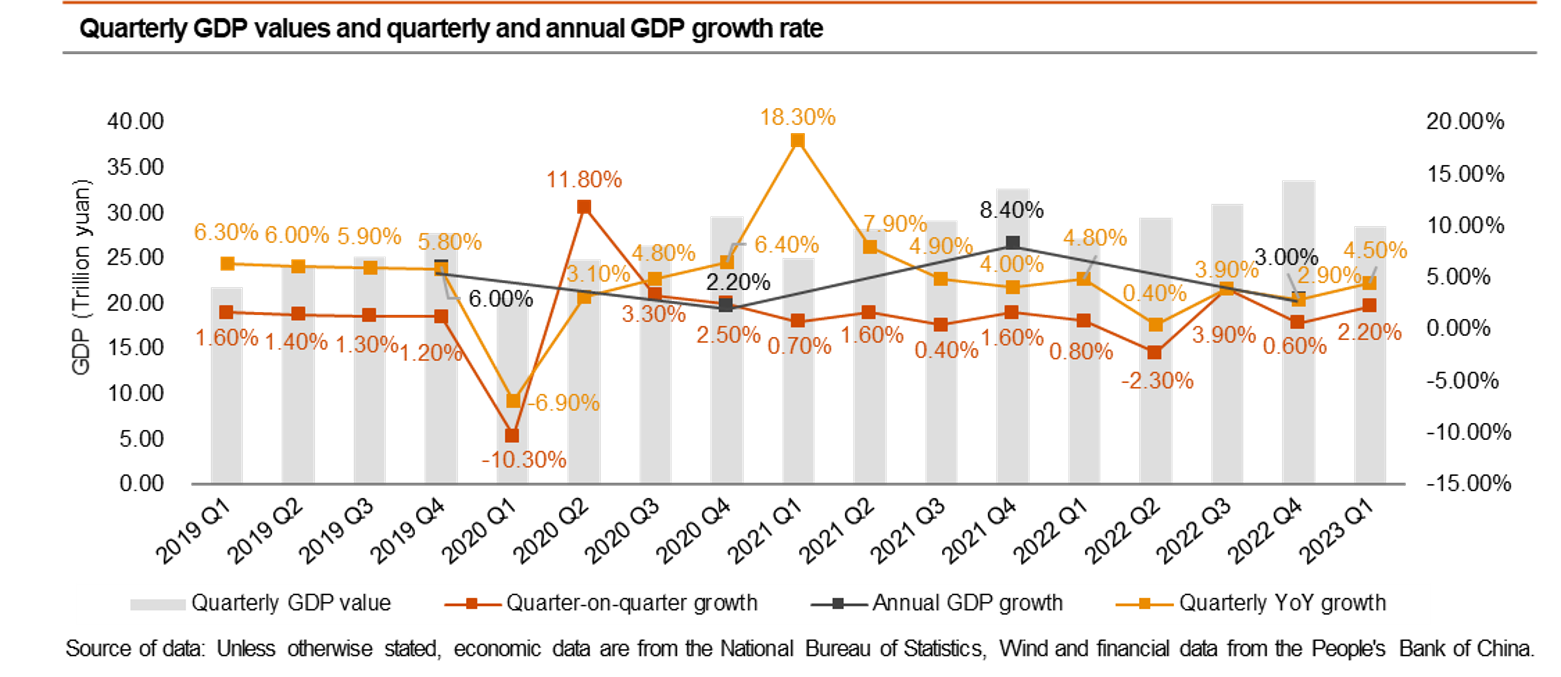China Economic Quarterly Q1 2023
China's GDP growth increased by 4.5% in Q1 2023, beating market expectations.
This issue provides an overview of the macroeconomic trends in Q1 2023, some policy updates and hot topic analysis.

Highlights

Here are some macro-economic highlights:
- Total GDP reached 28.5 trillion yuan with 4.5% growth in Q1
- Total fixed asset investment reached 10.73 trillion yuan, a 5.1% increase
- Total real estate investment reduced by 5.8% to 2.6 trillion yuan
- PMI rebounded to above 50% in Q1
- Industrial added values rose by 3% in Q1
- Total retail sales of consumer goods increased by 5.8% to 11.49 trillion yuan
- Imports and exports increased by 4.8% to 9.89 trillion yuan
- PPI declined by 1.6% and CPI increased by 1.3% in Q1
Policy updates
Growth of aggregate financing to the real economy increased by 10% in Q1
According to the People's Bank of China (PBoC), China's monetary policy will continue to regard stability as the top priority in 2023. The PBoC will adhere to prudent regulation and control, placing emphasis on domestic goals, adjust policies primarily according to changes in the domestic economy and prices, and make innovative and effective use of structural monetary policy tools to provide support to key areas and strengthen weak links.
Fiscal revenue increased by 0.5% while fiscal spending grew by 6.8%
In Q1, fiscal revenue increased by 0.5% YoY to 6.23 trillion yuan. According to the Ministry of Finance, there were a few factors affecting the growth of fiscal revenue. On the other hand, the national public budget expenditure increased by 6.8% YoY to 6.79 trillion yuan in Q1.
Hot topic analysis: Mega trends of China’s population and labour force
Highlights
- In 2022, China's population saw a negative growth for the first time, occurring earlier than the forecasted year of 2025.
- The labour force, the number of 16 to 59 year olds, peaked in 2010, followed by a total decline of 45 million between 2010-2020 (from 939.68mn to 894.36mn). In the same period, however, the total number of migrant workers increased by over 43 million.
- The number of people that have completed higher education and secondary vocational education have increased substantially. At the end of 2022, the number of graduate students (including doctors), undergraduate and junior college students and students with secondary vocational education totalled 58.09mn.
- In recent years, there has been a sharp rise in China's overall labour productivity. While there is still a large gap between that of China and some developed economies, there is huge scope for improvement.
- China has a long way to go to reach the urbanisation level of developed countries, and its population of 133mn migrant workers will be the country's key driver in achieving that. However, the number of migrant workers may have reached its peak and labour shortages may become the norm.
Contact us
Managing Partner - Markets, PwC China
Tel: +[86] (10) 6533 2838 / +[852] 2289 8288






